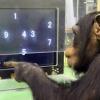-
Posts
137 -
Joined
-
Last visited
About GeeKay
- Birthday 10/19/1950
Profile Information
-
Location
Lincoln UK
-
Interests
Cycling, swimming, reading, writing and generally making the best of life. I intend to do a lot of motorhome-style travelling in the nearish future, complete with my favourite touring bike and a decent sized telescope. And I'm looking forward to it - immensely.
-
College Major/Degree
BA (hons) English Literature at the University of Wales, Aberystwyth
-
Favorite Area of Science
Astronomy
-
Occupation
Ex-private tutor (English Lit). Now retired.
GeeKay's Achievements

Baryon (4/13)
3
Reputation
-
Markus, many thanks for your detailed responses - thought-provoking conjectures included! 🙂 The take-home message then is that flat spacetime is (as far as we can tell at present) an absolute prerequisite for this kind of warp-drive system, that any region exhibiting locally strong spacetime curvatures would therefore need to be avoided at all costs. Clearly then a fair amount of route planning (infrastructure too?) would be needed when it came to plotting flight paths between various star systems. . . challenges for posterity most likely, alas. PS. I personally found this link helpful for gaining a basic overview on the Alcuberrie warp drive and the problems it poses. I include it here for other armchair laypersons like myself coming to this subject cold. https://theaeroblog.com/6-reasons-why-the-alcubierre-drive-or-warp-drive-is-not-possible-in-2023/
-
Having only lately caught up with the ideas surrounding the Alcubierre warp drive concept, I am still struggling to understand how such a system would cope in regions of seriously non-flat spacetime - say, performing an otherwise lethally close "flyby" (excuse the grammatical hand-waving here) of a neutron star or stellar-mass BH. Reading between the lines from some online articles, none of which directly address this subject, the thought comes to mind such a spacecraft and its occupants would be unaffected by such an encounter while in warp mode, no matter how intense the gravitational tides might be. Nonetheless, the suspicion is that this may not be correct, though all this is way beyond my ken. Any ideas?
-
Thanks, swansont - many thanks too for the link, which I've saved. Something like a possibly dished solar power array, then? Interesting! 🙂
-
I'm writing a short SF story about first contact with ET (a hackneyed subject for sure). Still, everything has come to a juddering halt due to a problem about large-scale laser communications within the solar system, more particularly a laser com setup located on an asteroid in the Belt. The problem is to do with laser receivers, or detectors, as they're also called. I understand the basic technology behind them, but can't picture what one would look like in the flesh. Surely it wouldn't resemble a giant radio dish? (like the one at Jodrell Bank, for instance). Instead, images of antennae keep popping into my mind. I have no idea why. Apologies for the dumbness of this question.
-
It's often mentioned that cosmic rays include non-charged subatomic particles like neutrons as part of their mix. This seems to contradict the two facts that an isolated neutron spontaneously decays within just 15 minutes and that the universe is awfully big. The only solution that springs to this mind is that extreme time dilation (due to near-lightspeed motion) hugely extends a neutron's normal existence, relatively speaking. Is this true? Or is this a classic instance of not seeing the elephant in the room? 🤥
-
Actually I was looking for some info about single homogeneous asteroids as opposed to conglomerates, but that would appear to be out of the question, at least for now. I'll try again in a few years' time. PS. Some of those slabs would make for interesting fireside ornaments.
-
GeeKay started following Query about the Mirror Test for Robots , Monolith asteroids: a Silent Order. , How many M-Type asteroids will Earth (truly) need? and 1 other
-
I'm seeking some (any) online information about small monolith asteroids. . . including info about the kind of rocks that form them. Unfortunately Google search hijacks this simple query by substituting it for rubble pile asteroids (even Wikipedia plays this trick). Try it: type "monolith asteroids" (with quotes) into the Google search bar and see what happens. Weird.
-

How many M-Type asteroids will Earth (truly) need?
GeeKay replied to GeeKay's topic in Other Sciences
Yes, I do wonder sometimes if future developments in nanotechnology and its ilk down here on Earth may dispense with the need to extract precious metals from asteroids in the first place. Even that isn't a given, of course. Few thing are. -
I read somewhere that a single 30m wide near-Earth asteroid (2012-DA14) may be worth some $20 trillion dollars in terms of its rare metals content. Meanwhile, the global precious metals market in 2022 was worth $290 billion dollars. That's approximately one hundredth of what DA14 could offer the world. Does this mean then that the mining of one small run-of-the-mill asteroid every few years would be plenty enough to satisfy Earth's needs for the foreseeable future? In other words having an entire offworld mining industry with fleets of asteroid mining outfits plundering the Main belt for its platinum-group metals etc, etc, would be superfluous. . . strictly for the birds, in fact? Of course, this doesn't factor in surveying costs, those required by heavy plant infrastructure, transportation costs, risk factors and all the other negatives that must otherwise weigh down such an enterprise. Even so, just for the sake of argument - assuming, for instance, fusion-powered spacecraft are running the show by now instead of chemical rockets - would the above thought experiment still hold some water here? PS. I've posted this question here in the Lounge, given that its topic addresses mineralogy as well as astronomy. Couldn't think where else to put it. Correction: the ballpark figure quoted above should be one 69th rather than a 100th. My apologies.
-
Thanks for that. So assuming for argument's sake that QCs were to become general purpose PCs at some point in the future, would it then be correct to assume they would indeed require a password. . . if only to protect them from being hacked into by other QCs?
-
Apologies for asking such a basic question, but Google search seems incapable of addressing it correctly: Do (or will) quantum computers ever require password protection of their own? Or are they their own protection? Many thanks.
-
With regards to biological sentience and whatever forms AI might exhibit of it in the future, I do wonder how it would manifest in AI (AGI?) if one holds to the view that evolutionary drives have played a major role in promoting sentience in some mammals. Of course, the fact that roboticists are able replicate many other features drawn from animal nature - mechanical hands etc - might question the validity of this view. Still, mental processes, as opposed to physical attributes, could still raise a very high bar here, all the more so given that we currently lack a scientific description of human consciousness itself. In addition, it seems that the importance of emotions is too often downplayed, or even ignored when it comes to explaining (say) human motivations, decision-making etc. Indeed, some neuroscientists claim that "consciousness, requiring autobiological memory, emerges from emotions and feelings" - not the other way round (Damasio). Does this mean AI-style consciousness can't arise without emotive inputs? Well, that's a question way beyond this poster, that's for sure! All that can be suggested here is that were machine sentience to occur, it might turn out to be a very different beast than whatever it is that's buzzing away between our ears. It could be that one reason why consciousness is famously considered the 'hard problem' is because there are so few analogues of it occurring elsewhere in living nature. Yes, we now know that certain other animals possess it within degrees - our primate cousins, dolphins, elephants etc. Unhappily there appears to be no way that even the smartest of elephants can meaningfully communicate with us about how their consciousness compares with our own. For sure, this might not solve the issue, even if they could - but it could still fill in some important blanks along the way. An encounter with an advanced alien civilisation, on the other hand, could well be game over, were that to ever happen. . . PS. I really like Mistermack's idea about shadows as an alternative to mirrors. Also, Peterkin's explanation why dogs can't be asked to recognise their visual images reflected in mirrors. An olfactory alternative? Thanks again.
-
Many thanks for the contributions. They've given me a great deal to think about on the subject of machine consciousness, vis-a-vis the mirror test. Proof appears to be the big decider here, a salutary point and one I hadn't fully appreciated until now. As for explaining why a machine should have consciousness (the "hard problem" for AI systems?) in the first place, that's a question for another time, I guess. Meanwhile, again many thanks. . . much food for thought! 🙂
-
This may come across as a self-answering question, but here goes: if a robot was able to "convincingly" pass the mirror test, does this prove it has self-awareness? Or would it be simply down to clever programming? In other words, are there limits to the mirror test as it applies to robots? (I've restricted this query to free-standing robots because I'm uncertain how a mainframe computer or AI system could be tested in this corporeal sense). Thanks for reading this post. Any responses would be greatly appreciated.
-
So the OTP is a Vigenère cipher, after all. Simon Singh does a good job explaining Vigenère ciphers in the book - good enough for a tyro like me to understand the tabular process. The take-home message then is that a third-party can get an OTP's plaintext from the (revealed) key by the above method. Thanks also for the links.




